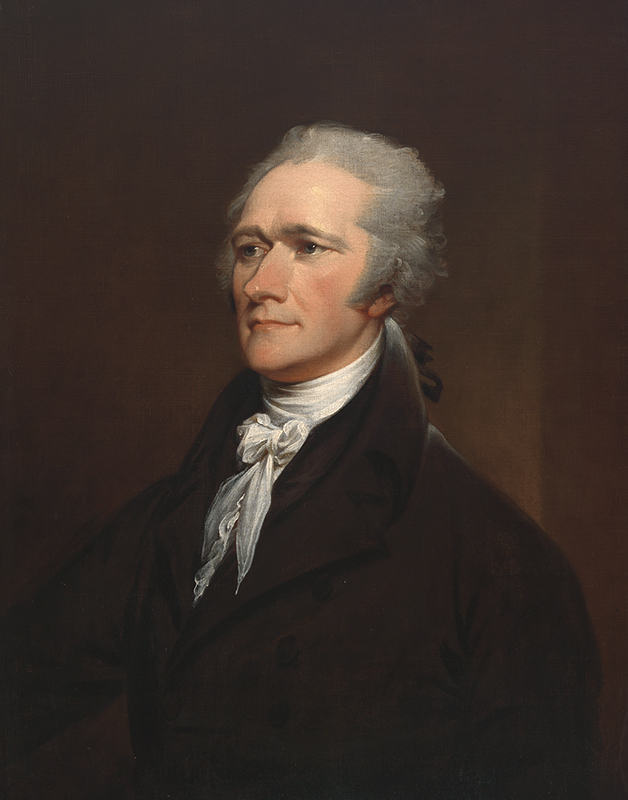Alexander Hamilton (1757–1804)

Alexander Hamilton 1757–1804 | Born Nevis, West Indies | Trumbull (1756–1843), after Giuseppe Ceracchi | Oil on canvas, 1806 | Gift of Henry Cabot Lodge | NPG.79.216
Illegitimate and orphaned at an early age, Alexander Hamilton possessed drive and intelligence that attracted wealthy patrons who sent him to North America to study at King’s College (now Columbia University). An early advocate for independence from Britain, he enlisted in the army and came to the attention of George Washington, who made him a member of his military “family.”
After independence, Hamilton supported a stronger national government, assisting in the ratification of the Constitution by authoring, with John Jay and James Madison, the most original contribution to American political thought, the Federalist Papers. Washington, impressed with Hamilton’s mastery of economics, made him the first secretary of treasury. Hamilton’s policies—assumption of state debts, encouragement of commerce and manufacturing, and promotion of a national bank—are credited with laying the groundwork for a strong republic. In 1804 he was killed in a duel with the vice president, Aaron Burr.
John Trumbull was born in 1756 in Connecticut. He was blind in one eye because of a childhood accident, but was an astute observer and meticulous painter, excelling in small oil paintings. His oeuvre includes portraits of many famous early Americans and scenes of the American Revolution. He studied under Benjamin West in Europe and after returning to America became president of the American Academy of the Fine Arts. This portrait was commissioned a few months after Hamilton’s death and was based on the 1791 sculpted bust by Giuseppe Ceracchi.
- How can we use this portrait of Hamilton to determine the era in which he lived?
- What adjectives would you use to describe Hamilton here?
- Imagine there is a thought bubble above Hamilton’s head. What is he thinking about?